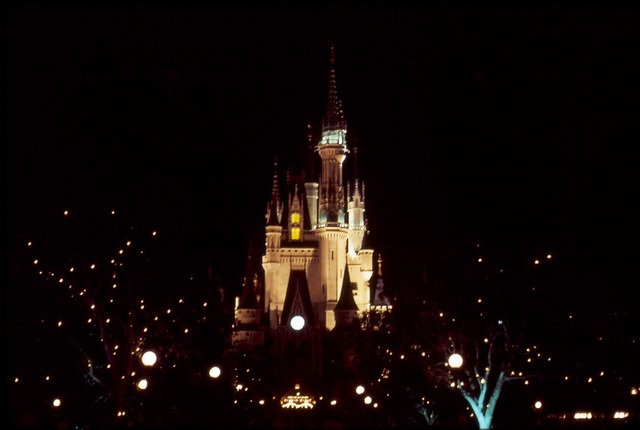Why did Walt design Main Street with a fantasyland castle at the end of it?
That's a *little* different because Sleeping Beauty Castle wasn't and isn't *part* of Main Street the way that, say, Clarabelle's Ice Cream Shop is *part* of Buena Vista Street.
The juxtaposition of SBC and Main Street is part of the design of Disneyland, but the design of each is relative to their own lands. The story of Main Street doesn't include a Castle, the story of Fantasyland doesn't include a Main Street, but the story of
Disneyland includes them both. If you had the Emporium popping up between Peter Pan and Mr. Toad's Wild Ride that'd be a different conversation - that would be breaking the theme and story that is otherwise consistent within Fantasyland.
I've talked about this a bit on this board before, let me see if I can find the post.
Found it:
Let's not forget that the thing Walt Disney aspired to in creating the environs of Disneyland was not necessarily "immersion".
It's not like he placed Sleeping Beauty Castle at the end of Main Street for lack of a better place to put it - the juxtaposition was part of the point.
Disneyland plays by different rules - A Bavarian Castle makes no sense at the end of Main Street U.S.A., except that it is the quintessential vista of Disneyland. The relationship between those things is one the parks draws, not one it draws upon. Which is a brilliant tool that I think present day Imagineering often overlooks. Transitions are useful until they’re not, and sometimes, for various reasons, you end up having to put two unrelated things next to each other. The trick then is to do it artfully and create a strong relationship where none existed before. Disneyland is full of these magical contradictions, but they’re only magical because they were made magical - I don’t know that seeing the Monorail glide through Fantasyland has ever taken me “out of Fantasyland”, it’s magical enough on its own that it just seems to be visiting rather than a fixture that feels out of place. But that’s the benefit of building a place where you’re allowed to write the rules, you can do something like that in a way that makes sense even if it doesn’t on paper.
DCA seems to make up its own rules to a lesser extent - in most places the effort is made to provide a seamless transition, and then in the places where they can’t they seem to hope you don’t notice the jump instead of seizing the opportunity to make a statement of it. Which is, you know, a choice, but you get backed into corners more quickly and it’s harder to write your way out of them when 99 percent of what you’re building is prescribed my existing properties that either offer you a built-in transition point or they don’t. I wish DCA would be more willing to make more of a meal out of putting things next to each other. I’ve always got the feeling, especially since the DCA Redo, that someone was apologizing for the Monorail’s presence in that park, where at Disneyland they never do.
What’s more fastastic, having the Monorail half-way hidden over Buena Vista Street with minimal view for guests both on and off, or the winding spaghetti-bowl labyrinth trip it takes through the wilds of Fantasyland and then around the Matterhorn before arriving at its home in Tomorrowland?
Parts of that relate specifically to the different conversation that was being had at the time, but hopefully the relevant points are clear.
So, a better comparison to SBC at the end of Main Street would be if you walked down a version of Buena Vista Street that featured Character's names in a way that seemed organic to the period and didn't feature the Characters they supposedly inspired, and at the end of the street was a building separate from Buena Vista Street that featured them all as a capstone on the story - "Walt Disney Traveled through California as it was when he arrived to eventually arrive at realizing his own vision for what it could be, with all these wonderful new friends we could have fun with".
Because that is a bit the story of Disneyland - you walk down an idealized Main Street that harkens back to Walt Disney's humble beginnings until you arrive at a Castle that represents all the fantastical things that came out of a life that started in a simple, small, American town.
The reverse comparison would be if Main Street DID in fact end with an actual Civic Building instead of the Castle, and the story was that "this is a romanticized version of America's Main Street as Walt Disney saw it as a child" but dotting the street along the way were references to Walt Disney's Peter Pan, Snow White, and Mr. Toad built into the architecture - which would be inconsistent with the idea that this place is set in the period of his childhood.
It basically comes down to the stories of the Lands and how they integrate with the stories of their Parks. I don't think it's necessarily unpopular to say that Disneyland Park does this better than DCA - since part of Disneyland's success is that it's historically had more vision than basically any park anywhere. Disneyland is a conceptual grand slam and DCA 2.0 simply had a little more trouble in the writers room.



